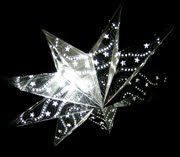What is the evidence
Kholijah binti Yaacob (G75388)
Although thorough investigation of claimed injury or death attributed to black magic has shown the real cause to be malicious aggression or murder, scientific research into the deaths of people who were said to have died as the result of a curse or a voodoo ritual, has shown the victims to have died of fear.
Death through fear is fairly common, and is reported by some doctors in connection with surgical operations,especially in the past. In 1887 Dr. Crile had watched helpless as his friend, William Lyndman died of shock after amputation of both legs. William had lost little blood, and no vital organs were injured. Crile went on to develop anaesthesia and blood transfusion to counteract death through shock. But some forms of shock appeared to be outside any physical cause. In 1898 Crile was on an army transporter off Cuba and examined a young officer who was delirious with fear due to facing his first battle. He was as deep in shock as if his legs had been crushed by a wagon as William Lyndman’s had. This led Crile to become interested in exophthalmic goitre, an illness which produces a similar type of anxiety condition. Despite the use of anaesthetics, no one had successfully operated on such a goitre condition. Every patient died. Crile discovered why when he attempted such an operation in 1905.
Amran bin Che Meh (G75320)
By speaking of "black religion" I am particularly concerned with religions of African derivation practiced in the Americas and I will focus on the most fertile source of images of African-derived religions, Haitian vodun. By speaking of "black magic" I am referring somewhat facetiously to the images of African-derived religions created by outsiders, and written or filmed for large audiences, presumably also of outsiders. These are the "popular" images of vodun and other African-derived religions, supported by and recognizable to mass audiences of readers and filmgoers.An image is a reduction of data into a form or a frame that is understandable and communicable to a particular community. Any verbal or pictorial representation of African-derived religions must reduce them to forms recognizable to certain people. All presentations of these religions - whether they are created by believers, scholars, journalists, novelists or film makers - are reductions of the reality which they seek to communicate.
Hasnul Hisham bin Ruslan (G75361)
Strabo refers to necromancy as the principal form of divination amongst the people of Persia, and it is believed to also have been widespread amongst the peoples of Chaldea (particularly amongst the Sabians or star-worshipers), Etruria, and Babylonia. The Babylonian necromancers were called Manzazuu or Sha'etemmu, and the spirits they raised were called Etemmu.
Necromancy was widespread in Western antiquity with records of practice in Babylon, Egypt, Greece, and Rome. The oldest literary account of necromancy is in Homer’s Odyssey (ca. 700 BC). In the Odyssey (XI, Nekyia), Odysseus under the tutelage of Circe, a powerful sorceress, makes a voyage to Hades, the Underworld, in an effort to raise the spirits of the dead using spells which Circe has instructed. His intention is to invoke and ask questions of the shade of Tiresias, in order to gain insight on the impending voyage home. Alas, he is unable to summon the spirit without the assistance of others. In Homer's passage, there are many references to specific rituals associated with necromancy; the rites must be done during nocturnal hours, and based around a pit with fire. In addition, Odysseus has to follow a specific recipe, which included using sacrificial animals' blood for ghosts to drink, while he recites prayers to both the ghosts and gods of the underworld.Mohd. Yusuf bin Yaakob (G76175)
Rituals, such as these, were common practices associated with necromancy, and varied from the mundane to the more grotesque. Rituals in necromancy involved magic circles, wands, talismans, bells, and incantations. Also, the necromancer would surround himself with morbid aspects of death, which often included wearing the deceased's clothing, consumption of unsalted, unleavened black bread and unfermented grape juice, which symbolized decay and lifelessness.Necromancers even went as far as taking part in the mutilation and consumption of corpses. Rituals, such as these, could carry on for hours, days, even weeks leading up the summoning of spirits. Often these practices took part in graveyards or in other melancholy venues that suited specific guidelines of the necromancer. Additionally, necromancers preferred summoning the recently departed, citing that their revelations were spoken more clearly; this timeframe usually consisted of 12 months following the death of the body. Once this time period lapsed, necromancers would summon the deceased’s ghostly spirit to appear instead.Mohd. Azril bin Kapli (G76169)
There are also many references to necromancers, called "bone-conjurers", in the Bible. The Book of Deuteronomy (XVIII 9–12) explicitly warns the Israelites against the Canaanite practice of divination from the dead. This warning was not always heeded: King Saul has the Witch of Endor invoke the shade of Samuel using a magical amulet, for example. Later Christian writers rejected the idea that humans could bring back the spirits of the dead, and interpreted such shades as disguised demons, thus conflating necromancy with demon-summoning.
Caesarius of Arles entreats his audience to put no stock in any demons, or "gods" other than the Christian God, even if the working of spells appears to provide benefit. He states that demons only act with divine permission and are permitted by God to test Christian people. Caesarius does not condemn man here; he only states that the art of necromancy exists, although it is prohibited by the Bible.






0 Responses to What is the evidence
Post a Comment